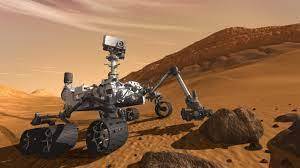Artificial intelligence and machine learning have had a dramatic impact on a wide range of fields and enterprises, paving the way for operation automation and optimization, as well as the creation of new business opportunities. However, because of rapid technological advancements, these technical innovations are being applied in research and development outside of our atmosphere and into space. Let's take a quick look at how NASA uses AI and Machine Learning in its many space missions and earth science research.
AI and Machine Learning are being used in space exploration.
NASA is constantly making advances in AI applications for space research, such as automating image analysis for galaxy, planet, and star classification, developing autonomous space probes that can avoid space junk without human intervention, and utilizing
AI-based radio technology to make communication networks more effective and disturbance-free.
However, one of NASA's most crucial AI applications is the development of autonomous landers (robots) that roam the surface of other planets. These autonomous robots must make decisions and avoid obstacles on the uneven terrain while determining the best course without explicit directions from the control room. Some of Mars exploration's most significant advances have depended mainly on autonomous robots.
NASA is utilizing machine learning in its space projects.
1. Mars Rovers Did you think Tesla, Google, Uber, and other firms were the first to make significant investments in self-driving cars? In actuality, NASA had been working on autonomous driving systems for Mars Rovers for almost a year. AutoNav, a machine learning-based navigation and mobility system for self-driving Mars rovers, was used in the 2004 arrival of the Spirit and Opportunity rovers on Mars. Curiosity, a rover launched in 2011, also uses AutoNav and is still exploring Mars to this day in the hopes of finding water and other elements that may make Mars feasible for human travel in the future!
2. Space Medicine What happens if astronauts require medical help while traveling beyond Earth's orbit? They will not be allowed to return to Earth for a medical examination! As a result, NASA is working on the Exploration Medical Capability, which will use Machine Learning to provide healthcare options based on the astronauts' expected future medical needs. These healthcare options will be developed by licensed medical professionals, who will learn and grow as a result of the astronauts' experiences.
3. Search for Planets You are already aware of how vast the cosmos is. NASA estimates that there are approximately 100 billion stars in the galaxy, with approximately 40 billion capable of supporting life. This isn't science fiction; NASA believes we might find aliens one day! Before NASA can detect aliens, though, it must first discover an increasing number of new planets in other solar systems. NASA will investigate the atmospheric spectra of these exoplanets once they have been located to see if they have the capacity to support life.
4. An Astronaut Robot Were you under the assumption that astronauts have to be human? You'd be correct normally, but NASA has recently created a robotic astronaut. Science fiction is coming true! The Robonaut was created to work alongside astronauts in space, assisting them in tasks that would be dangerous for humans to do.
Conclusion
AI has shown to be a game-changer in space science, such as cataloging unlabeled galaxies, stars, black holes, and exploring cosmic events, as well as communications, autonomous StarCraft navigation, tracking, and control systems. The most recent application of AI can be observed in efforts to construct AI-powered, empathic robotic assistants to support astronomers in long-distance space flight by identifying and predicting crew demands and interpreting astronauts' emotions.




Leave Comment